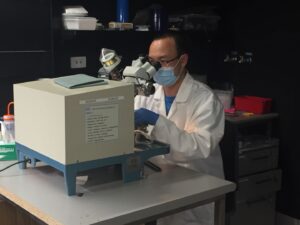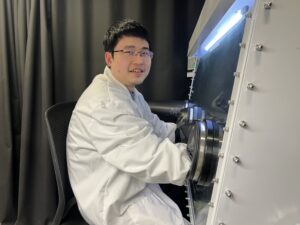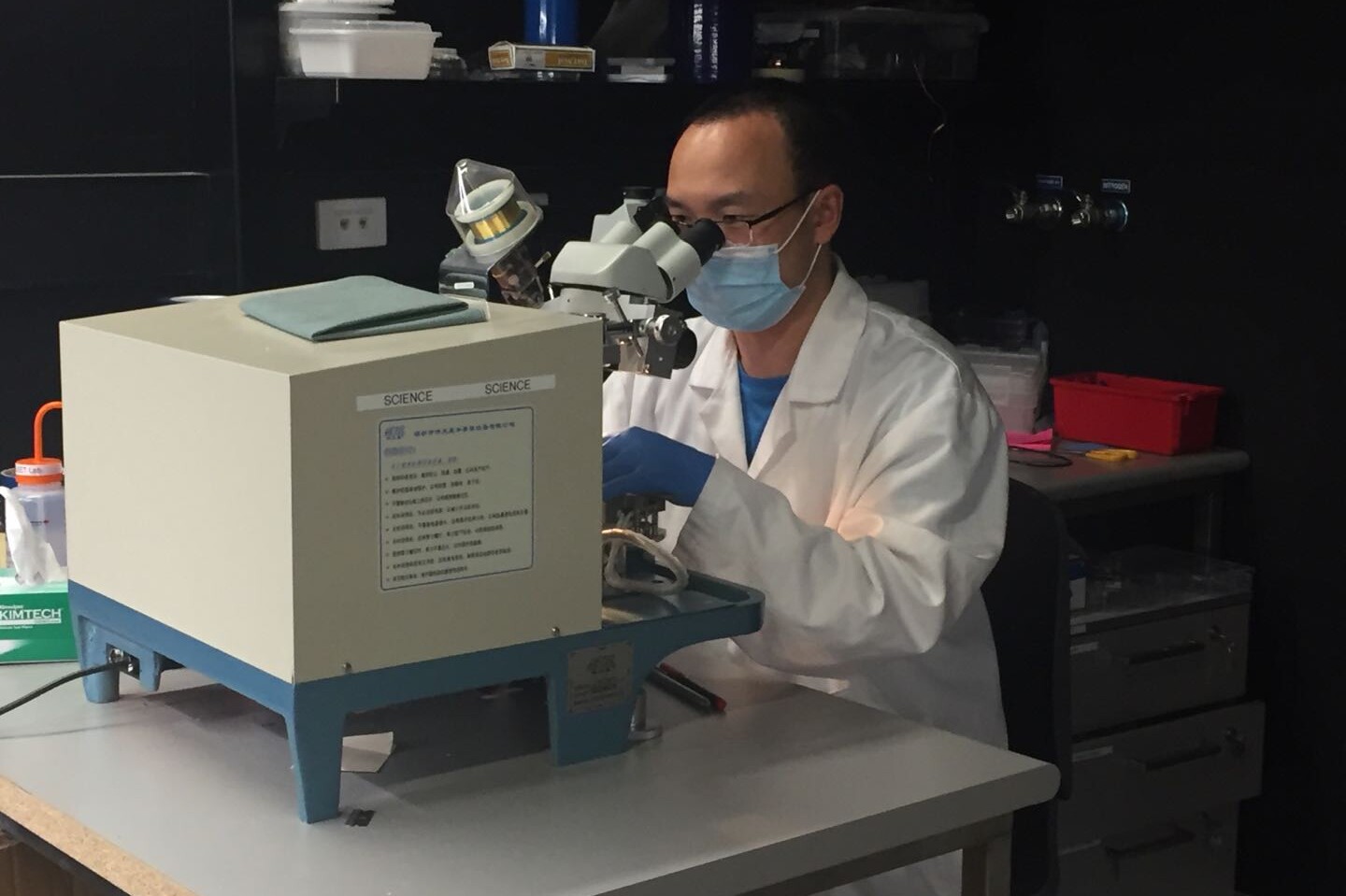
Electrically-controlled superconductor-to-‘failed insulator’ transition and giant anomalous Hall effect in the kagome metal CsV3Sb5
An RMIT-led international collaboration published in 2023 uncovered, for the first time, a distinct disorder-driven bosonic superconductor–insulator transition.
The discovery outlines a global picture of the giant anomalous Hall effect and reveals its correlation with the unconventional charge density wave in a recently discovered kagome superconductor metal family, with potential applications in future ultra-low-energy electronics.
Superconductors, which can transmit electricity without energy dissipation, hold great promise for the development of future low-energy electronics technologies. They are already applied in diverse fields such as hover trains and medical magnetic resonance imaging (MRI) machines.
However, precisely how the superconductivity forms and works in many materials remains an unsolved issue and limits its applications. FLEET Research Fellow Dr Guolin Zheng (RMIT). “We wanted to see if we could achieve similar success as our trials using the proton gate technique in vdW spintronic devices, which effectively modulated similar carrier densities,” says first author, FLEET Research Fellow Dr Guolin Zheng (RMIT).
Recently, a new kagome superconductor family termed AV3Sb5has attracted intensive interest for their novel properties. (‘Kagome’ materials feature an unusual lattice named for a Japanese basket-weave pattern with corner-sharing triangles, and the A in AV3Sb5 refers to caesium, rubidium, or potassium.)
Although quantum phenomena accessible in AV3Sb5 materials provide ideal platforms for physics studies such as topology and strong correlations, the origin of these material’s giant anomalous Hall effect and superconductivity have remained unexplained, despite many recent investigations.

The FLEET-led collaboration of researchers at RMIT University and partner organisation the High Magnetic Field Laboratory (China) confirmed for the first time the electric control of superconductivity and anomalous Hall effect (AHE) in the van der Waals (vdW) kagome metal CsV3Sb5.
The key was manipulating the giant AHE via reversible proton intercalation.
“We wanted to see if we could achieve similar success as our trials using the proton gate technique in vdW spintronic devices, which effectively modulated similar carrier densities,” says first author, FLEET Research Fellow Dr Guolin Zheng (RMIT).
“The ability to tune the carrier density and the corresponding Fermi surfaces would play a vital role in understanding and manipulating these novel quantum states and would potentially realise some exotic quantum phase transitions.”
The team chose to test this theory on CsV3Sb5devices, easily designed and fabricated based on the FLEET team’s rich experience in this field. With thinner flakes, around 40 nanometres, the injection of the proton became quite easy, as well as being highly reversible. “Indeed, we have seldom met such a proton-friendly material!” says co-first author, FLEET Research Fellow Dr Cheng Tan (RMIT).
The unique coexistence of electronic correlations and band topology in AV3Sb5 materials allows investigation of intriguing transitions of these correlated states, such as superconductor-to-insulator transition, a quantum phase transition usually tuned by disorders, magnetic fields and electric gating.
The team’s further explorations of these potential quantum phase transitions met with success, but they were surprised to observe that the critical temperature of the phase shift decreased, showing a clear superconductor-to-insulator transition under increasing proton injection.

“Proton intercalation introduced disorder and suppressed both charge density wave and superconducting phase coherence,” says contributing-author A/Prof Lan Wang (also at RMIT). “And this gave rise to a superconductor–insulator transition associated with localised Cooper pairs and higher electrical resistance, dubbed a ‘failed insulator’”.
This discovery of a distinct, disorder-driven bosonic superconductor–insulator transition outlines a global picture of giant AHE and reveals its correlation with the well-known unconventional charge density wave in the CsV3Sb5 family. “This significant and electrically-controlled superconductor–insulator transition and anomalous Hall effect in kagome metals should inspire more investigations of the relevant intriguing physics, with promise for energy-saving nanoelectronic devices,” says Lan.
** “Electrically controlled superconductor-tofailed insulator transition and giant anomalous Hall effect in kagome metal CsV3Sb5 nanoflakes” was published in Nature Communications in February 2023. (DOI: 10.1038/s41467-023-36208-6)
